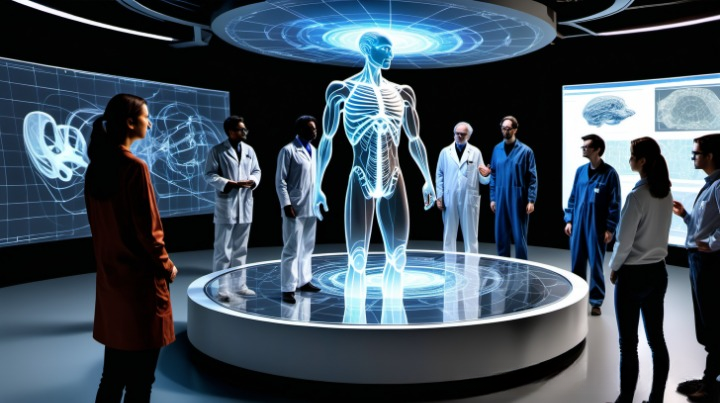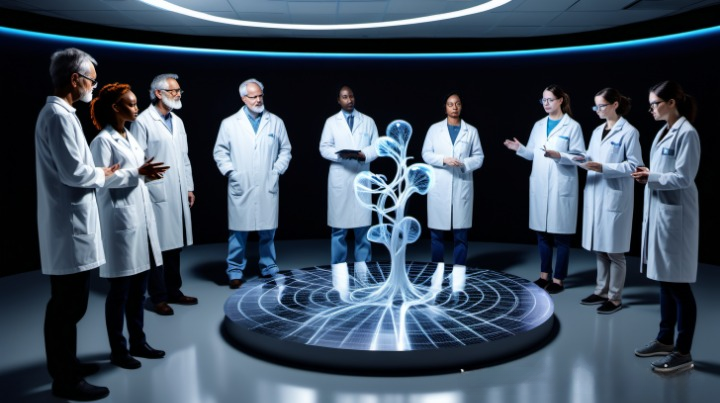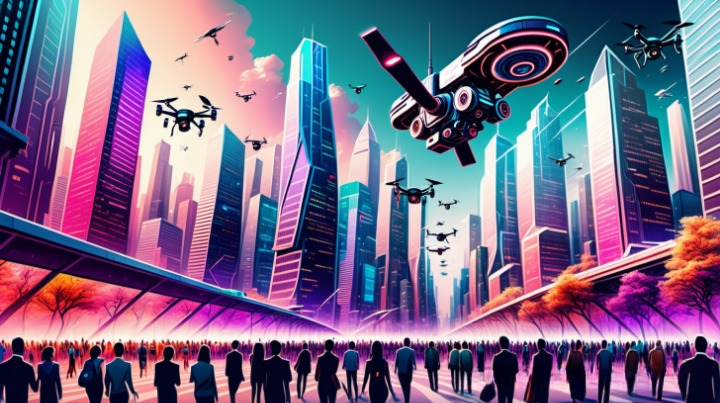Explore how human interaction with AI drives success. Learn about the pivotal role of collaboration between humans and AI, supported by real-world examples and expert insights.

Introduction
In today’s digital age, the integration of artificial intelligence (AI) has become ubiquitous across various sectors, revolutionizing the way we work, live, and interact. At the heart of this transformation lies the dynamic relationship between humans and AI, where collaboration drives innovation and success. This article delves into the significance of human interaction with AI for achieving success, offering insights and strategies to harness this synergy effectively.
The Role of Human Input in AI Development
- Training Data Annotation: Humans play a crucial role in annotating training data for machine learning models. For example, in image recognition tasks, humans label images with corresponding objects or features to train AI algorithms effectively.
- Algorithm Design and Tuning: Human expertise is essential in designing and fine-tuning AI algorithms. Engineers and data scientists adjust algorithm parameters based on real-world feedback and domain knowledge to improve performance and accuracy.
- Quality Assurance and Validation: Human input is required to validate AI-generated outputs and ensure they align with intended objectives. For instance, in natural language processing applications, human reviewers verify the accuracy and relevance of AI-generated text.
- Ethical Oversight and Decision-making: Humans provide ethical oversight and decision-making guidance in AI development. Ethical review boards assess the potential implications of AI technologies on privacy, fairness, and societal well-being, guiding responsible development practices.
Empowering Individuals and Organizations

- Workflow Automation: AI enables organizations to automate repetitive tasks, freeing up human resources for more strategic activities. For example, chatbots handle routine customer inquiries, allowing human customer service agents to focus on complex issues and relationship-building.
- Data-Driven Decision Making: AI-driven insights empower individuals and organizations to make informed decisions based on data analysis. Financial institutions use predictive analytics to assess credit risk and optimize investment portfolios, maximizing returns and minimizing losses.
- Personalized Recommendations: AI algorithms deliver personalized recommendations to users based on their preferences and behavior. Streaming platforms like Netflix leverage AI to suggest movies and shows tailored to individual tastes, enhancing user satisfaction and engagement.
- Innovative Product Development: AI fosters innovation by enabling the rapid development and iteration of new products and services. Tech companies utilize AI-powered prototyping tools to simulate and test product designs, accelerating the innovation cycle and reducing time-to-market.
Real-World Examples of Human-AI Collaboration

- Healthcare Diagnostics: AI-powered diagnostic tools assist healthcare professionals in accurately diagnosing medical conditions. For example, IBM’s Watson Health platform analyzes medical imaging data to detect abnormalities and recommend treatment options, augmenting the diagnostic capabilities of radiologists and oncologists.
- Manufacturing Optimization: AI-driven predictive maintenance systems optimize equipment performance and minimize downtime in manufacturing facilities. General Electric’s Predix platform monitors machinery health indicators in real-time, predicting potential failures and scheduling maintenance proactively, improving operational efficiency and reducing costs.
- E-commerce Personalization: AI-powered recommendation engines enhance the shopping experience for online consumers. Amazon’s recommendation system analyzes past purchase history and browsing behavior to suggest relevant products, increasing sales conversions and customer satisfaction.
- Autonomous Vehicles: AI enables the development of autonomous vehicles capable of navigating complex environments safely. Tesla’s Autopilot system utilizes machine learning algorithms to interpret sensor data and make real-time driving decisions, reducing the risk of accidents and improving overall road safety.
Challenges and Considerations
- Data Privacy and Security: The proliferation of AI raises concerns about data privacy and security. Organizations must implement robust data protection measures to safeguard sensitive information and prevent unauthorized access or misuse.
- Algorithmic Bias and Fairness: AI algorithms may exhibit bias based on the data they are trained on, leading to unfair or discriminatory outcomes. Addressing algorithmic bias requires careful scrutiny of training data and algorithm design to ensure fairness and equity.
- Ethical Dilemmas: The deployment of AI raises ethical dilemmas surrounding issues such as autonomy, accountability, and transparency. Ethical frameworks and guidelines are needed to navigate these complexities and ensure responsible AI development and usage.
- Workforce Displacement and Reskilling: The automation of tasks by AI may lead to workforce displacement in certain industries. Organizations must invest in reskilling and upskilling initiatives to equip workers with the skills needed to thrive in an AI-driven economy.
These examples illustrate the multifaceted nature of human-AI collaboration and the challenges and considerations involved in harnessing AI for success. By leveraging human input effectively and addressing ethical and societal implications, we can unlock the full potential of AI to drive positive impact and innovation.
Conclusion
In conclusion, human interaction with AI is a catalyst for success in the digital era, empowering individuals and organizations to achieve their full potential. By fostering collaboration between humans and AI, we can harness the collective intelligence and creativity of both to tackle complex challenges and drive meaningful progress. As we navigate the evolving landscape of AI-driven technologies, let us prioritize responsible AI deployment, ethical considerations, and inclusive practices to create a future where human-AI interaction fosters prosperity and well-being for all.
FAQs (Frequently Asked Questions)
1. How does human input enhance the accuracy of AI algorithms?
- Human input provides valuable context, domain expertise, and subjective judgment that AI algorithms may lack. By incorporating human insights into the training and validation process, AI algorithms can better understand and interpret complex scenarios, leading to improved accuracy and relevance in their outputs.
2. What are some ethical considerations in the development and deployment of AI technologies?
- Ethical considerations in AI development include issues such as data privacy, algorithmic bias, transparency, and accountability. It’s essential to ensure that AI systems are designed and deployed in a manner that respects individual rights, promotes fairness, and minimizes potential harms to society.
3. How can organizations mitigate the risks of algorithmic bias in AI systems?
- Organizations can mitigate algorithmic bias by implementing diverse and representative training datasets, conducting bias audits and assessments, and incorporating fairness metrics into AI development processes. Additionally, ongoing monitoring and evaluation of AI systems can help identify and address bias-related issues proactively.
4. What role does regulation play in governing AI development and deployment?
- Regulation plays a crucial role in establishing guidelines and standards for ethical AI development and deployment. Governments and regulatory bodies worldwide are increasingly recognizing the need for AI governance frameworks to address concerns related to data protection, consumer rights, and algorithmic accountability.
5. How can individuals prepare for the impact of AI on the future of work?
- Individuals can prepare for the impact of AI on the future of work by investing in continuous learning and skill development, particularly in areas that complement AI technologies, such as data analysis, machine learning, and human-centered design. Embracing a growth mindset and adaptability will be key to navigating the evolving job market in an AI-driven world.




